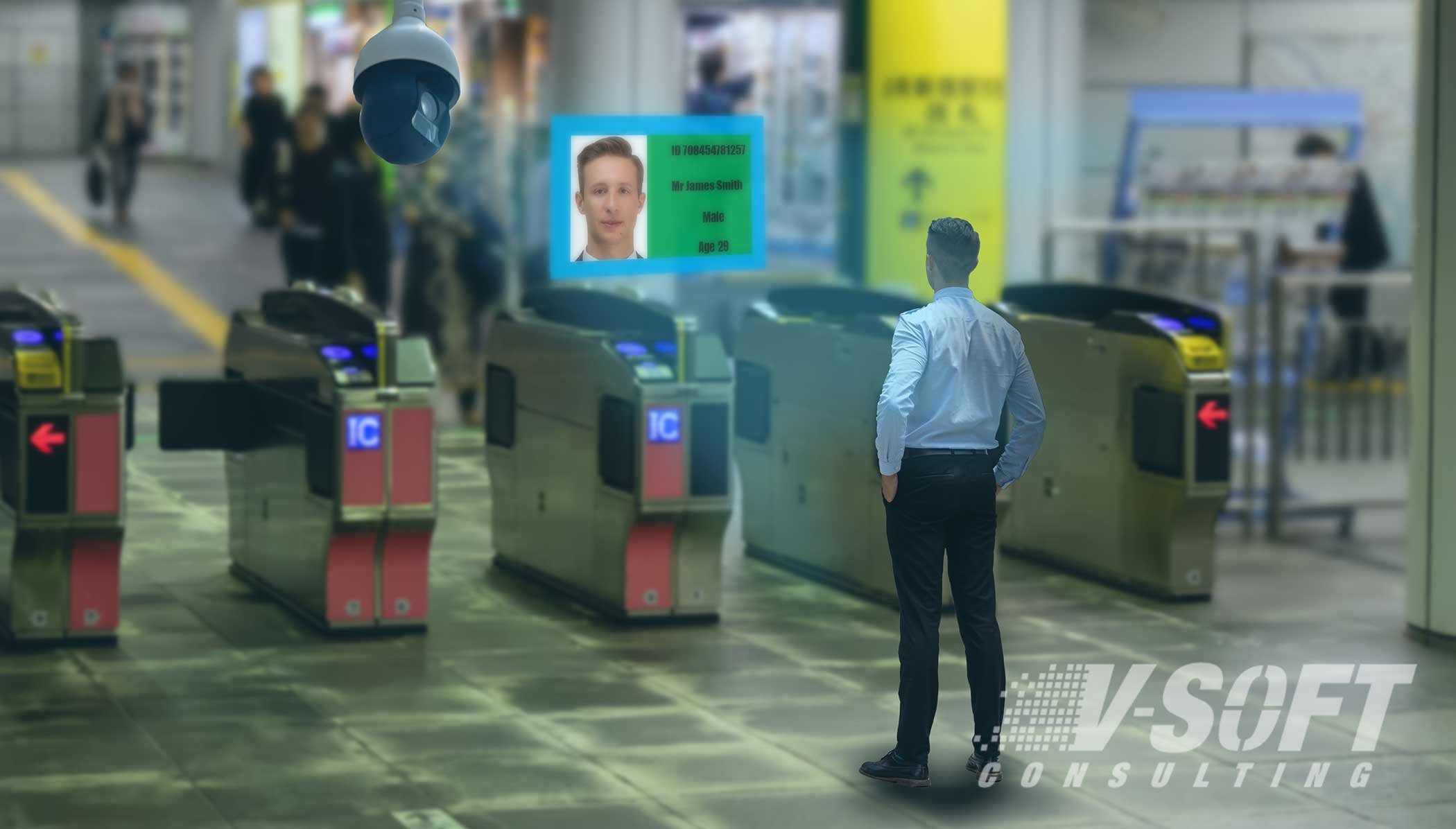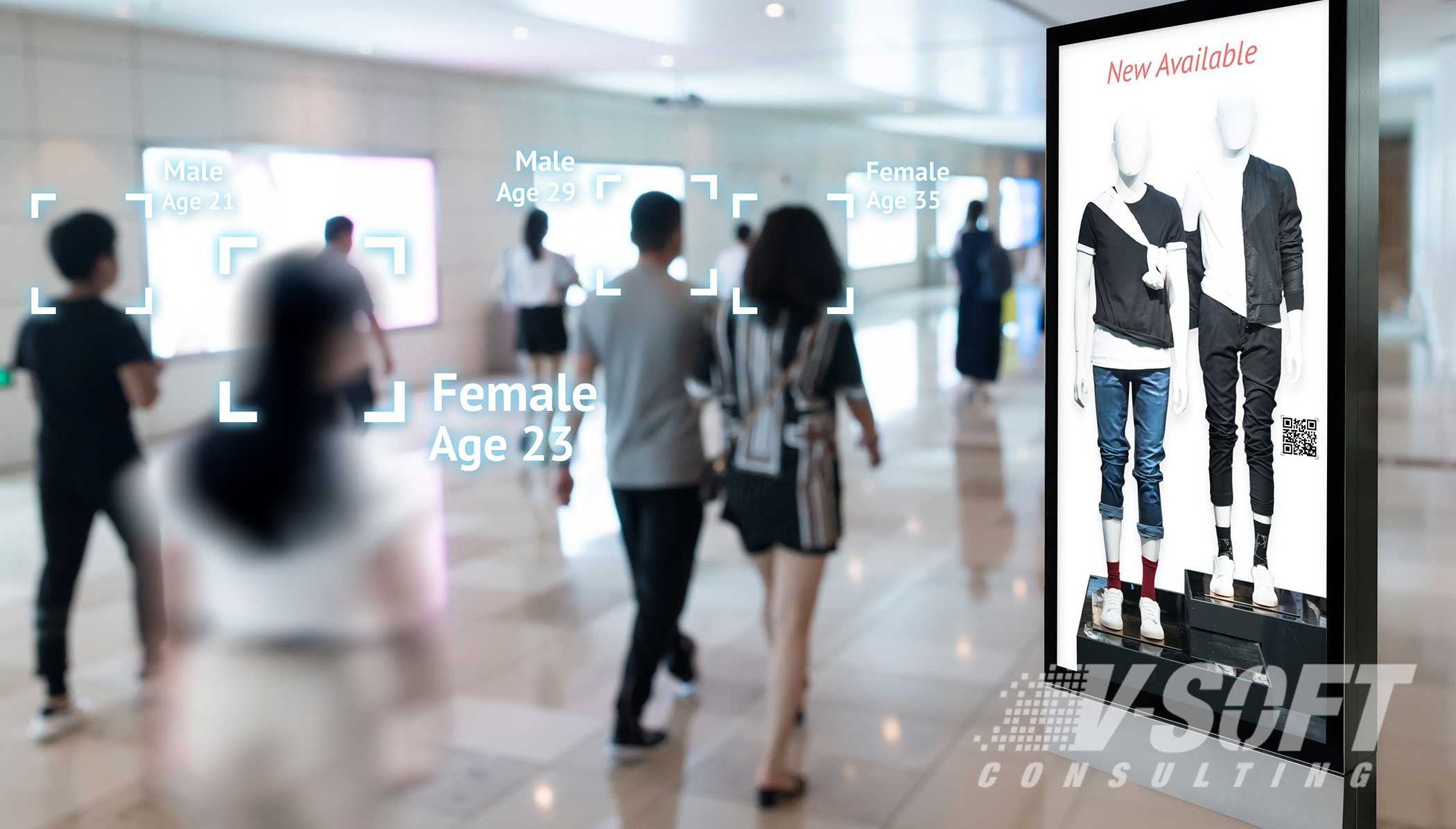AI Computer Vision is an effective technology which is being used by many industries to enhance productivity. Computer Vision infused with AI is playing a crucial role in the retail industry as well. AI is used in the retail industry throughout the customer service cycle and store operations. Innovative retailers are using AI Computer Vision to increase efficiency, enhance the customer experience and become more profitable.
Computer Vision Capabilities for Retail
AI-powered Computer Vision helps retail management understand their customers. This technology can shed light on customer preferences, reactions and behaviors to enhance customer experience and increase sales. Retailers use Computer Vision to provide valuable insights that humans can't notice on their own such as patterns of behavior and traffic.
Here are some the capabilities of AI Computer Vision that benefits the retail industry.
Facial Recognition
Facial Recognition can help retailers identify the people in their stores. This can help leaders understand who their loyal or frequent customers are.
Facial Recognition can also be used as a security measure to identify anyone who may be banned from the store for any reason or track and identify shoplifters.
There is even technology coming out that uses Facial Recognition to register faces and attach the information to their methods of payment. This way, whenever the customers enter the store, they don't need to wait in line to check out or use cash or credit cards. This process can simplify the shopping experience.

Object Recognition
Computer Vision Object Recognition successfully identifies objects in the environment. This is especially helpful in retail environments with thousands of different products displayed for customers to touch, see, and shop. Object Recognition can help identify which of the shelves are empty so that the staff can replenish that section.
Products aside, Object Recognition technology can be used to identify other important objects during the Coronavirus Pandemic, such as Personal Protection Equipment like masks and gloves. This technology can monitor employees who should be using gloves while handling produce or warehouse workers who should be wearing proper safety gear, for example.
Heat Mapping
Heat Maps are a great way to visualize frequent activities and traffic patterns. The concept of hot and cold areas showcase high or low activity. Heat Maps use warm and cool colors to illustrate high and low frequency activities.
In the retail industry, Heat Mapping can illustrate high and low traffic areas. Heat Maps are generated based on crowd density and frequently touched products. It provides detailed insights into crowd activity and helps managers know what products and sections are the most popular. Retail stores can use Heat Maps to adjust store layouts and to identify the most and the least visited.
Here are a few examples of how Heat Maps can be used in retail stores.
-
Identify the most popular products
-
Measure the interest of a new product
-
Add new items in high-traffic areas to capture the buyer’s attention
-
Appoint sales people to specific locations
How Retail Managers Can Use Computer Vision
Computer Vision capabilities such as Object Recognition, Heat Maps, and Facial Recognition can be very helpful in understanding buyers and improving their shopping experience.
Add Staff to High Traffic Areas
Computer Vision can monitor the number of shoppers and analyze customer traffic in real time. This can help managers know where to place sales clerks for optimal customer experience.
Maximize Marketing and Product Placement
Now that management knows the most frequented areas of the store, or most popular products, they can use that information to maximize their marketing and product placements. For example, if a product is popular, management may consider putting that product in the back of the store so costumers have to walk through the store (and look at many more products) before getting to the product. Likewise, if management knows that a certain location has the most customer traffic, they may place a new product or marketing to advertise to the highest number of people.

Improve Inventory Management
One of the most important aspects of the retail industry is inventory management. Computer Vision uses Object Recognition to identify which products are low stock and alerts clerks to be replenished. Inventory data can then be used for supply chain management to reorder the product and never run out of an in-demand product and lose out on sales.
Create Personalized Experiences
With this advanced technology, managers now know who is buying what products and how frequently they are visiting the store. Managers can use this information and send customers personalized recommendation or offers that match their buying habits. Or simply reward loyal customers with freebies and coupons.
















